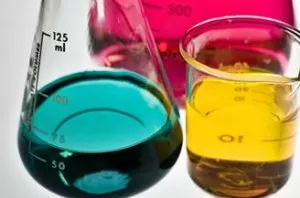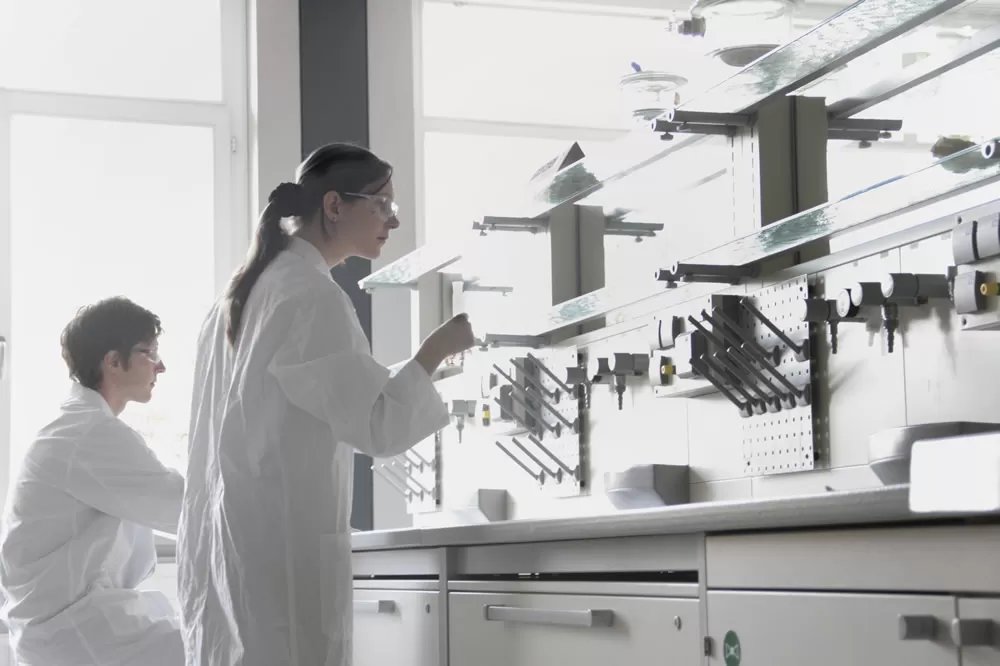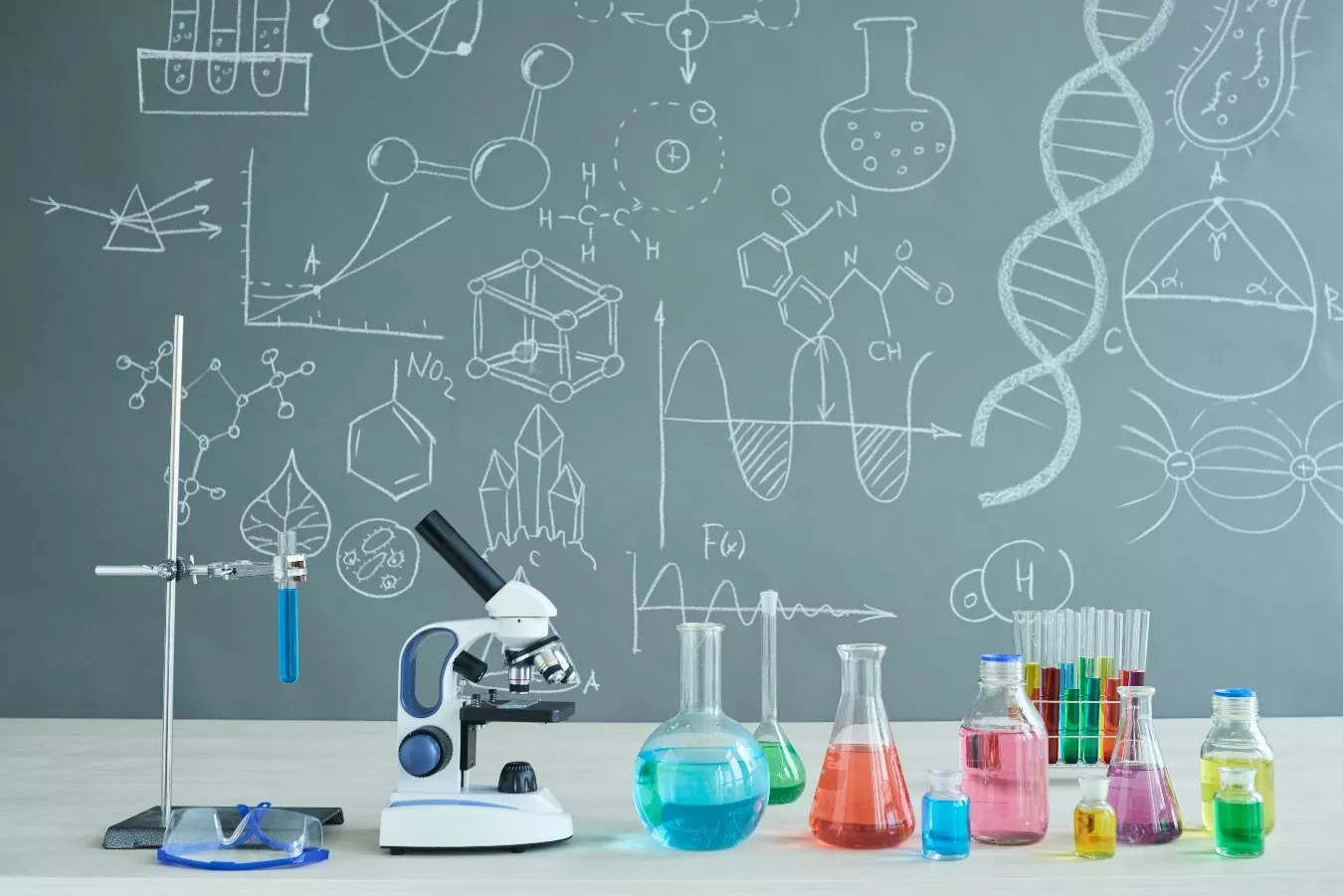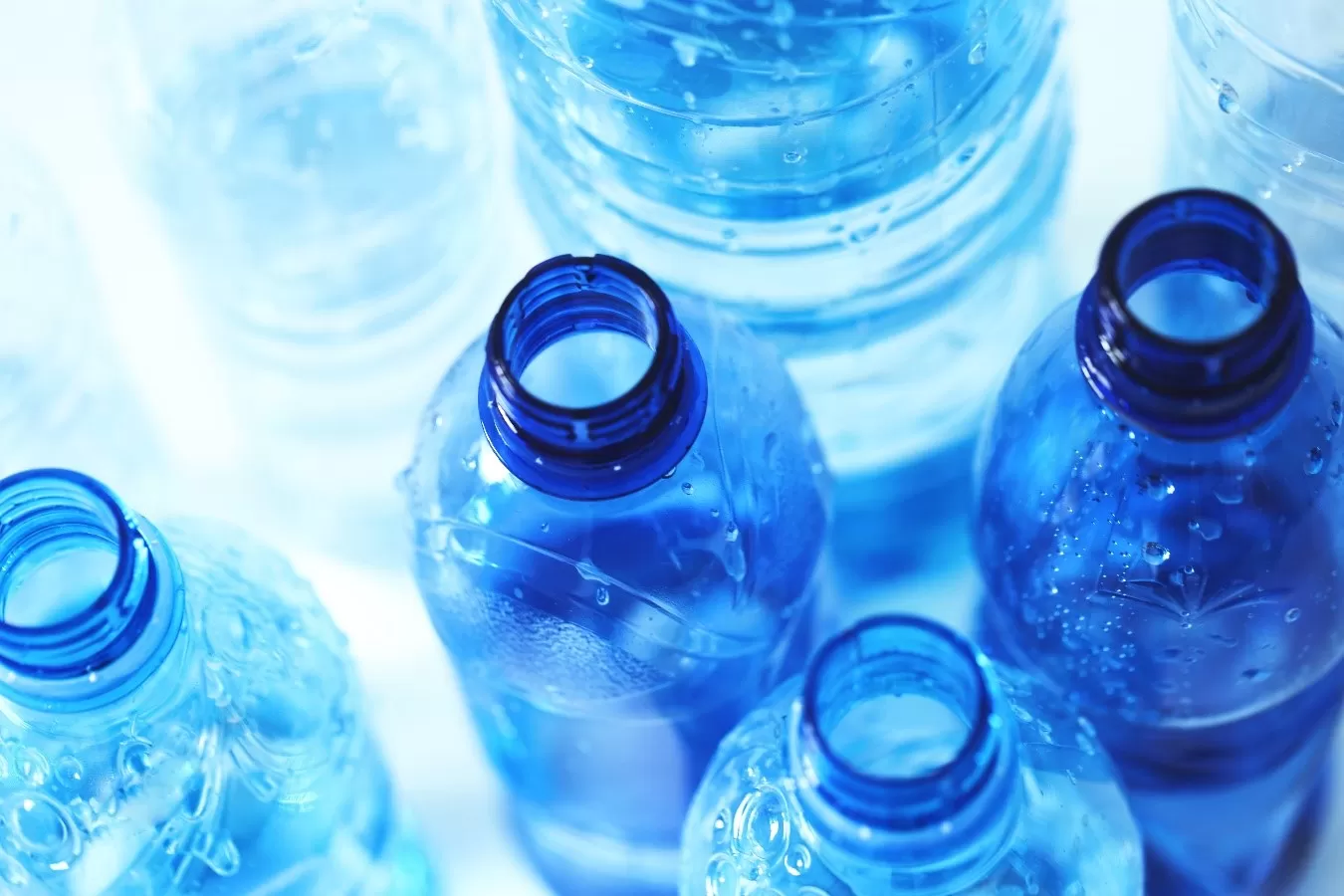Elements of transition
Chemical Glossary Terms

|
A B C D E F G H I J K L M N Ñ O P Q R S T U V W X Y Z
|
Chemical Terms begining with E

Boiling
Change of state from liquid to gas that occurs at a certain temperature and throughout the mass of t...
Arrhenius equation
Equation that allows to calculate the specific speed constant from the frequency factor (A), the act...
Equation of state.
Fundamental equation of the ideal gas PV = nRT, where P = pressure (atm), V = volume (L), n = moles,...
Nernst equation.
Equation that relates the potential of a cell, E, with the standard potential, E °, and the concent...
Chemical equation
Representation of a chemical reaction by chemical formulas and symbols. The chemical equation is req...
Effect of the common ion.
Decrease in the solubility of an electrolyte when an ion it contains is added to the equilibrium.
Greenhouse effect
Warming effect of the atmosphere and the surface of a planet because the atmosphere allows solar rad...
Tyndall effect
Dispersion of the light produced when passing through a light beam a container that contains a collo...
Zeeman effect.
Splitting of the spectral lines into finer ones, when the atoms emit light being subject to the acti...
Efficiency.
Performance of a chemical reaction expressed as a percentage. It is calculated as follows: mass of p...
Einsteinium
Symbol chemical element It is, belonging to the series of actinides, of atomic number 99. It is a ra...
Electricity.
Form of energy that is manifested by the flow of electrons through a conductor. A chemical reaction ...
Electrodialysis
Dialysis performed on a solution containing ions that can be eliminated by an electric field. The so...
Electrode
Electrical conductor that supplies or attracts electrons to a medium. There is a difference between ...
Reference electrode.
Electrode whose potential is known independent of the concentration of the analyte against which the...
Glass electrode
Electrode in which a potential difference develops through a thin glass membrane that separates solu...
Indicating electrode
Electrode whose potential is proportional to the logarithm of the molar concentration of the analyte...
Electrodes
Plates or metallic terminals of a discharge tube. The negative electrode is called the cathode and t...
Electrophoresis
Method of separation and identification of charged colloidal particles or ions in liquid phase, whic...
Electrolysis
Decomposition of an element in solution or melted by the action of a continuous electric current, wh...
Electrolyte
Chemical that dissolved or molten conducts electric current. Arrhenius stated that this was because ...
Electron
Negative charge subatomic particle 1.6x10e-19 C and mass of 9.1 * 10e-28 g. the electrons are in mot...
Electron.
Lightweight negatively charged lepton whose mass is 0.511 MeV, that is, about 1/1840 of that of a nu...
Electronegative
Chemical element that tends to capture electrons and to form negative ions. Halogens are typically e...
Valence electrons
Electrons of the last energy level. Lewis's theory proposes that these electrons are the most involv...
Electropositive
Chemical element that tends to lose electrons and to form positive ions. The alkali metals are elect...
Electrochemistry
Part of the chemistry that studies the relationships between chemical reactions and the electrical e...
Element
Substance that can not be divided into simpler ones by ordinary chemical methods. In an element, all...
Elements of transition
Set of elements from group 3 to 12 of the periodic table. They are characterized because their elect...
Buchner funnel
Special type of funnel that is used to perform vacuum filtrations. Filtration funnels usually use an...
Emulsion
Dispersed system in a medium in which the two phases are liquid is a type of colloidal dispersion. O...
Ionic bond
Link formed between an anion and a cation. These ions are attracted electrostatically, forming a ver...
Enantiomer
Optical isomer that has the power to deflect polarized light at a certain angle. The isomer that shi...
Endothermic
Term that applies to any process in which energy is absorbed. The solubility of salts whose dissolut...
Energy
The ability of a system to perform work in the form of movement or to produce light and heat. In the...
Quantized energy
Does it mean that the energy of the e? in the atom it is restricted to certain characteristic values...
Activation energy.
Energy that the reactants must overcome in a chemical reaction in order to become products. A slow r...
Ionization energy.
Energy that is needed to supply an atom of an element in a gaseous state to remove an electron.
Covalent bond
Link that occurs the sharing of a pair of electrons between different atoms. Thus, a shared pair of ...
Covalent bond
Chemical bond that results from the sharing of a pair of electrons between two atoms.
Hydrogen bridge link
Weak intermolecular bond formed between a hydrogen atom of a polar molecule and a very electronegati...
Homonuclear link
When it is formed between two identical atoms. The electronegativity difference equals zero and the ...
Ionic bond.
Link formed between a metallic and a non-metallic atom, in which the metal completely transfers its ...
Metallic link
A sequence in which all intervening electrons are located in specific areas, but move freely through...
Chemical bond
Union between atoms of the microlens or atomic groupings that form chemical compounds as a result of...
Enzyme
Protein specialized in the catalysis of biological reactions. Enzymes are extraordinarily specific a...
Enzymes
Proteins that function as biological catalysts of high specificity, which make possible the synthesi...
Chemical balance
State of a system in which the speed of the reactants is equal to the speed of the products of the r...
Erbium
Chemical element is symbol Er, belonging to the series of the lanthanides, of atomic number 68 and a...
Random error
Uncertainties due to variables that are impossible to control during a measurement process. It is al...
Systematic error
Error whose source and value is known exactly. It affects the measurement in a single direction and ...
Scandium
Chemical element is symbol Sc, belonging to group 3 of the periodic table, atomic number 21 and atom...
Isoelectronic species.
Chemical species that are characterized by having the same number of electrons.
Spectrum
Representation of a set of radiations of different frequency that have been obtained thanks to the d...
Spectrum
Range of electromagnetic energy organized in increasing or decreasing order of wavelength or frequen...
Continuous spectrum
Spectrum that contains all possible ranges of radiation from a minimum value to another maximum. It ...
Absorption spectrum
Spectrum obtained by illuminating a substance, which absorbs only certain radiation. These are captu...
Spectrum of bands
Spectrum obtained by the absorption of energy by high-density gas molecules. The electrons capture t...
Spectrum of emission
Spectrum obtained when a substance is heated. The outer electrons absorb supplied energy and migrate...
Spectrum of lines or atomic
Discontinuous spectrum of the atoms of a given element. A spectrum of lines separated from each othe...
Spectrum of lines.
Spectrum that produces an element when it is heated, excited by ions or when it absorbs photons. The...
Mass spectrograph.
Apparatus for determining the atomic weight of an element, by comparing its deviation in a magnetic ...
Spectrometer
Optical apparatus used in the direct mediation of the wavelengths and frequencies of the electromagn...
X-ray spectrum
Spectrum of discontinuous emission resulting from the excitation of heavy metals. Energy is produced...
Spectroscopy
Analysis technique that aims to study the physical and chemical properties of a substance through it...
Spectroscope
Optical device that is used to measure the wavelengths and frequency of the spectra. It is made up o...
Stabilizer
Substance that is added to a compound or a mixture to prevent its decomposition. It is used in food.
State
Situation in which a determined chemical system is found. A state is characterized by the value of i...
State of equilibrium
State in which the macroscopic properties of the system remain unchanged over time.
Excited state
State of an atom, molecule or group of atoms that have absolved energy and are in a higher standard ...
Fundamental status
State of an atom, molecule or group of atoms that are at their lowest possible energy level. This ha...
States of the material
Each one of the states of aggregation of the particles in which a substance can be presented and whi...
Primary standard.
Solution whose concentration is known with a high degree of accuracy and is prepared by dissolving a...
Standardization
Determination of the concentration of a solution through the use, direct or indirect, of a standard ...
Tin
Chemical element is symbol Sn, belonging to group 14 of the periodic table, of atomic number 50 and ...
Stoichiometry
Branch of chemistry that studies the quantitative relationships between its substances that are invo...
Ester
Organic compound derived from carboxylic acids in which hydrogen has been replaced by an alkyl radic...
Esterification
Reaction of obtaining an ester from a carboxylic acid and an alcohol. It is carried out in the prese...
Strontium
Chemical element is symbol Sr, belonging to group 2 of the periodic table, atomic number 38 and atom...
Structure of Lewis.
Electronic structure of a neutral or ionic compound, which shows how atoms are linked and their free...
Etanal
Very volatile, inflammable, irritating and narcotic liquid, called acetaldehyde. One of the industri...
Ethane
Saturated hydrocarbon present in natural gas, obtained from the fraction of the lowest boiling point...
Ethanol
Primary alcohol, the most known and important, is a colorless, flammable and pleasant-smelling liqui...
Ether
It can be considered of the alcohols by substitution of the hydrogen atom of the hydroxyl group for ...
Ethylene
Colorless gas, the simplest of the alkenes, presents all the typical addition reactions of the alken...
Europio
Chemical element is symbol Eu, belonging to the series of the lanthanides, of atomic number 63 and a...
Evaporation
Change of gas that takes place when a liquid passes to steam or gas. It occurs at any temperature an...
Accuracy.
Measure of the degree of agreement between an analytical result and the value that is accepted as tr...
Exothermic.
Term that applies to any process in which energy is released. The reaction of magnesium with hydroch...
Rutherford experiment.
Process by which metallic sheets were bombarded with particles and the existence of the nucleus of t...
Thomson experiment.
When working with a cathode ray tube, he discovered the electron and determined the relationship bet...
Extraction
Method of separation of the components of a mixture based on the difference of these substances in t...
Temas de química mas buscados

Pinzas de laboratorio
Son un tipo de sujeción ajustable, generalmente de metal, que forma parte del equipamento de laboratorio, mediante la ...
¿Que es la Química? Química General
¿Qué es la Química General? La química general es la base de todas las químicas y en el...
Noticias de Química

Incremento de estudios online en el área científica
El mundo de la ciencia ha cambiado significativamente en los últimos años debido al av...
La importancia de estudiar química
La importancia de estudiar química La química es una de las ciencias fundamentales ...
¿Qué es un manipulador de alimentos?
¿Qué es un manipulador de alimentos? Un manipulador de alimentos es una persona que tr...
Cómo estudiar química según Sergio Jacinto Gil García
La química es la ciencia que se encarga de estudiar las propiedades, composición y tra...
Tierras raras
El nombre de tierras raras se ha dado a un conjunto de 17 elementos químico como lo son:...
Tipos de plásticos de la industria química
Los plásticos son materiales duraderos, ligeros y fáciles de modificar ya que est&aacu...











